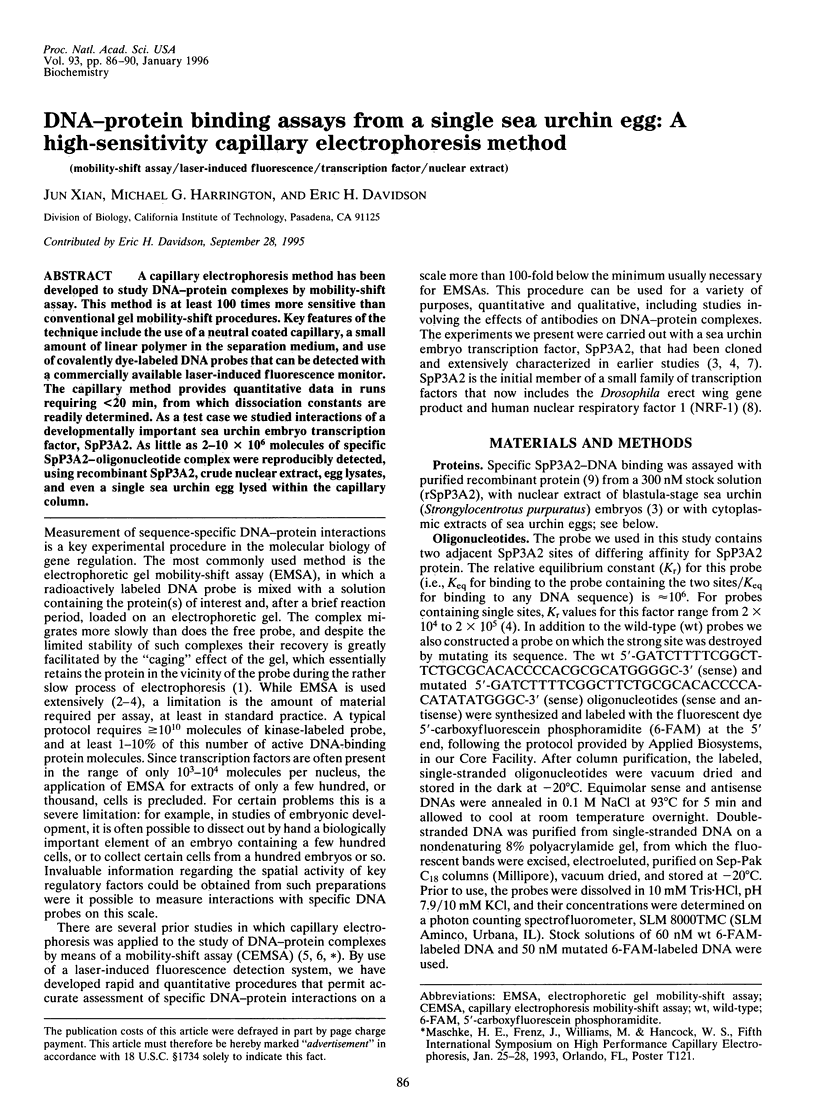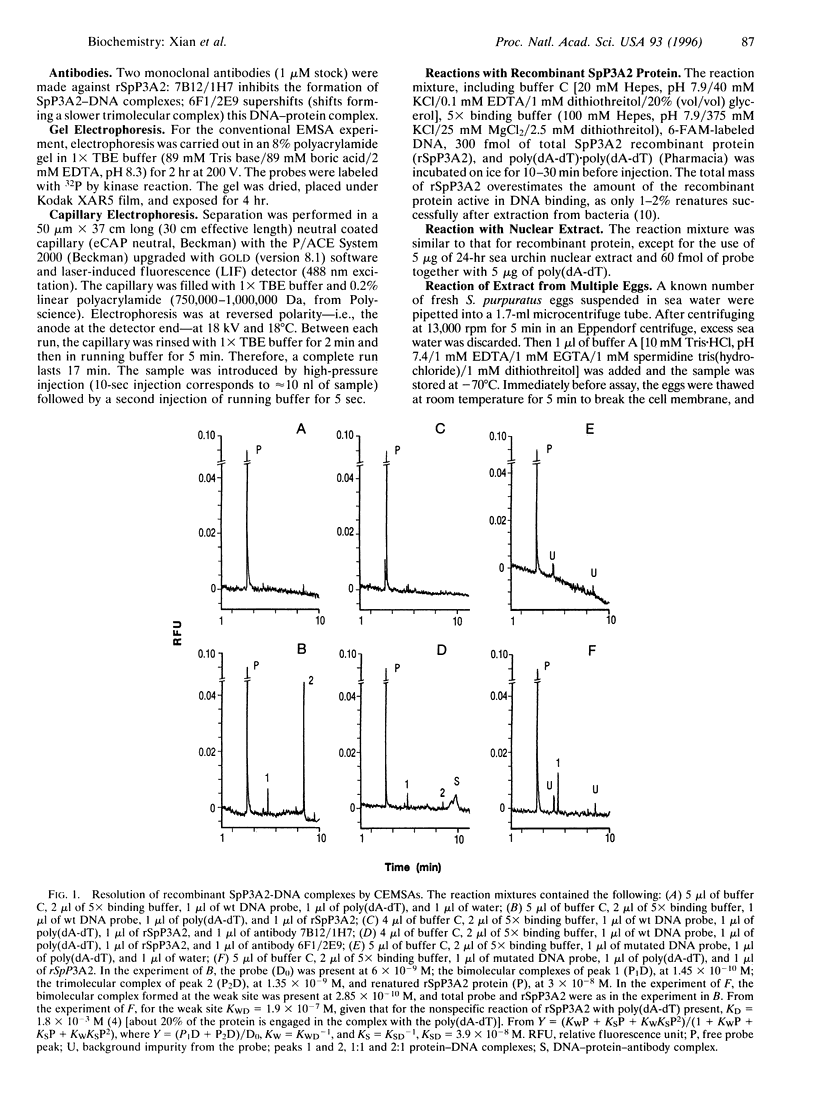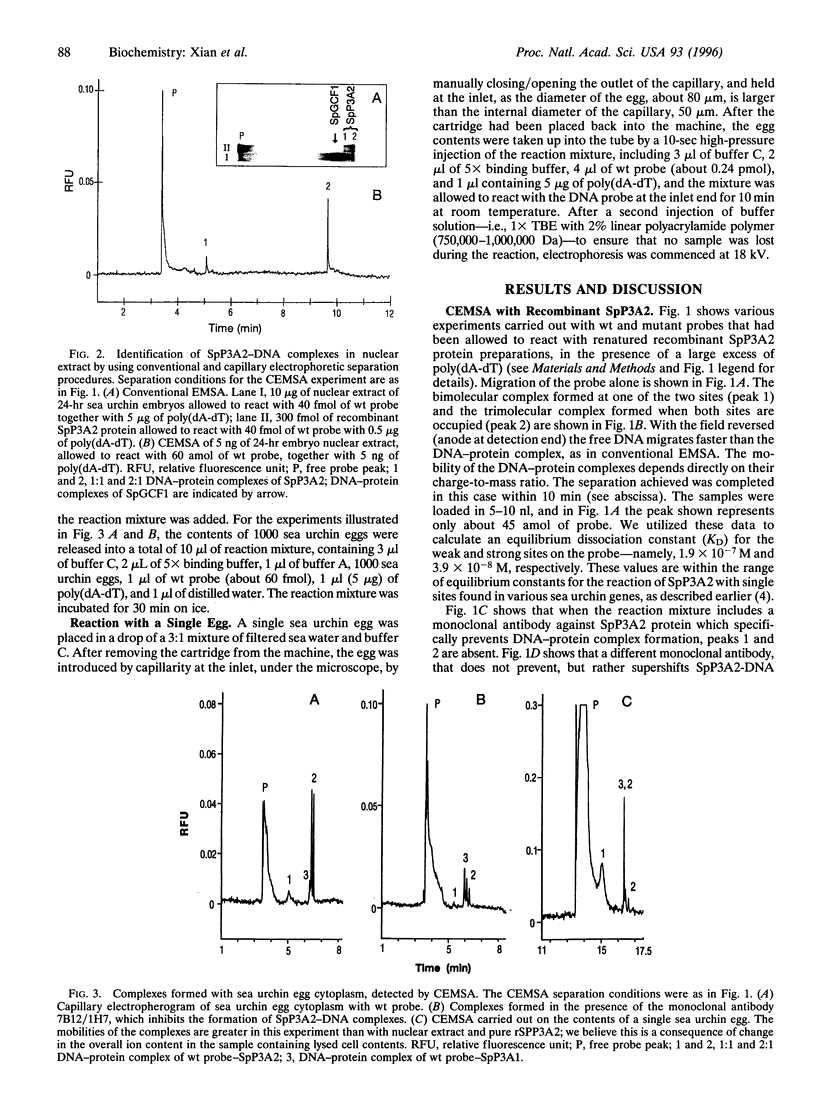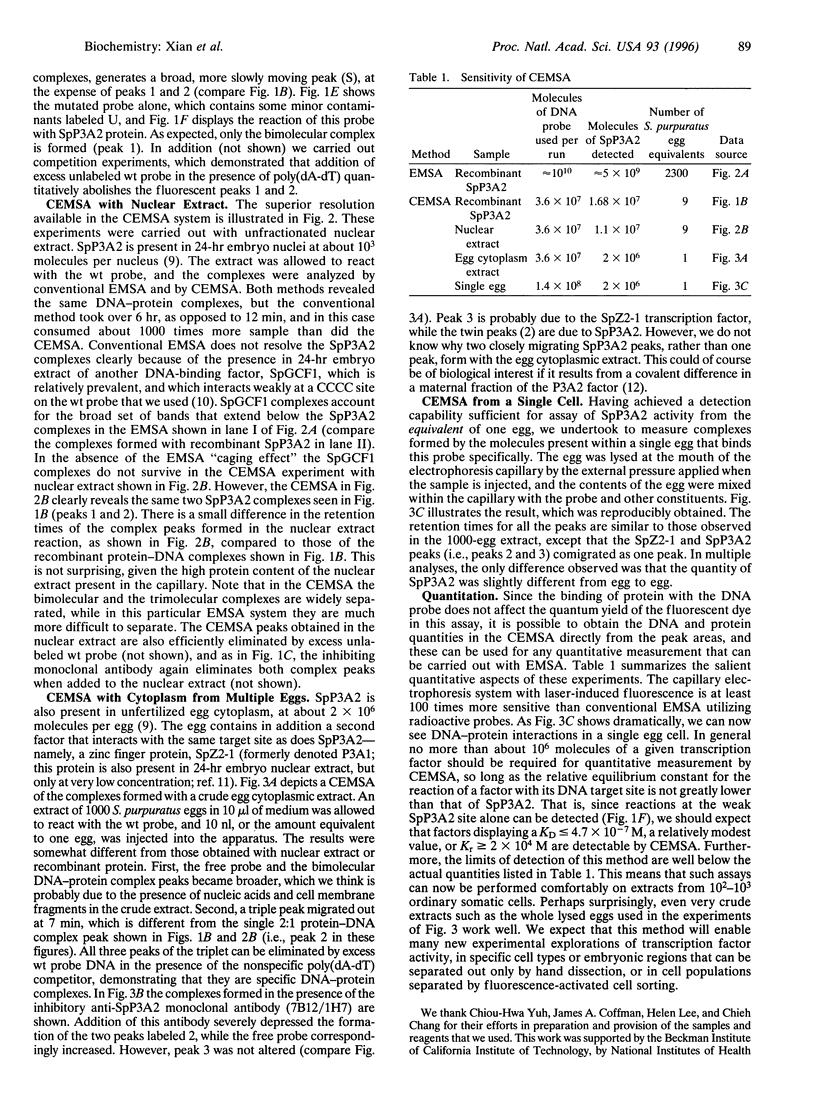Abstract
A capillary electrophoresis method has been developed to study DNA-protein complexes by mobility-shift assay. This method is at least 100 times more sensitive than conventional gel mobility-shift procedures. Key features of the technique include the use of a neutral coated capillary, a small amount of linear polymer in the separation medium, and use of covalently dye-labeled DNA probes that can be detected with a commercially available laser-induced fluorescence monitor. The capillary method provides quantitative data in runs requiring < 20 min, from which dissociation constants are readily determined. As a test case we studied interactions of a developmentally important sea urchin embryo transcription factor, SpP3A2. As little as 2-10 x 10(6) molecules of specific SpP3A2-oligonucleotide complex were reproducibly detected, using recombinant SpP3A2, crude nuclear extract, egg lysates, and even a single sea urchin egg lysed within the capillary column.
Full text
PDF




Images in this article
Selected References
These references are in PubMed. This may not be the complete list of references from this article.
- Calzone F. J., Hög C., Teplow D. B., Cutting A. E., Zeller R. W., Britten R. J., Davidson E. H. Gene regulatory factors of the sea urchin embryo. I. Purification by affinity chromatography and cloning of P3A2, a novel DNA-binding protein. Development. 1991 May;112(1):335–350. doi: 10.1242/dev.112.1.335. [DOI] [PubMed] [Google Scholar]
- Calzone F. J., Thézé N., Thiebaud P., Hill R. L., Britten R. J., Davidson E. H. Developmental appearance of factors that bind specifically to cis-regulatory sequences of a gene expressed in the sea urchin embryo. Genes Dev. 1988 Sep;2(9):1074–1088. doi: 10.1101/gad.2.9.1074. [DOI] [PubMed] [Google Scholar]
- Fried M., Crothers D. M. Equilibria and kinetics of lac repressor-operator interactions by polyacrylamide gel electrophoresis. Nucleic Acids Res. 1981 Dec 11;9(23):6505–6525. doi: 10.1093/nar/9.23.6505. [DOI] [PMC free article] [PubMed] [Google Scholar]
- Harrington M. G., Coffman J. A., Calzone F. J., Hood L. E., Britten R. J., Davidson E. H. Complexity of sea urchin embryo nuclear proteins that contain basic domains. Proc Natl Acad Sci U S A. 1992 Jul 15;89(14):6252–6256. doi: 10.1073/pnas.89.14.6252. [DOI] [PMC free article] [PubMed] [Google Scholar]
- Hough-Evans B. R., Franks R. R., Zeller R. W., Britten R. J., Davidson E. H. Negative spatial regulation of the lineage specific CyIIIa actin gene in the sea urchin embryo. Development. 1990 Sep;110(1):41–50. doi: 10.1242/dev.110.1.41. [DOI] [PubMed] [Google Scholar]
- Hudson J. M., Fried M. G. Co-operative interactions between the catabolite gene activator protein and the lac repressor at the lactose promoter. J Mol Biol. 1990 Jul 20;214(2):381–396. doi: 10.1016/0022-2836(90)90188-R. [DOI] [PubMed] [Google Scholar]
- Hög C., Calzone F. J., Cutting A. E., Britten R. J., Davidson E. H. Gene regulatory factors of the sea urchin embryo. II. Two dissimilar proteins, P3A1 and P3A2, bind to the same target sites that are required for early territorial gene expression. Development. 1991 May;112(1):351–364. doi: 10.1242/dev.112.1.351. [DOI] [PubMed] [Google Scholar]
- Virbasius C. A., Virbasius J. V., Scarpulla R. C. NRF-1, an activator involved in nuclear-mitochondrial interactions, utilizes a new DNA-binding domain conserved in a family of developmental regulators. Genes Dev. 1993 Dec;7(12A):2431–2445. doi: 10.1101/gad.7.12a.2431. [DOI] [PubMed] [Google Scholar]
- Zeller R. W., Britten R. J., Davidson E. H. Developmental utilization of SpP3A1 and SpP3A2: two proteins which recognize the same DNA target site in several sea urchin gene regulatory regions. Dev Biol. 1995 Jul;170(1):75–82. doi: 10.1006/dbio.1995.1196. [DOI] [PubMed] [Google Scholar]
- Zeller R. W., Coffman J. A., Harrington M. G., Britten R. J., Davidson E. H. SpGCF1, a sea urchin embryo DNA-binding protein, exists as five nested variants encoded by a single mRNA. Dev Biol. 1995 Jun;169(2):713–727. doi: 10.1006/dbio.1995.1181. [DOI] [PubMed] [Google Scholar]



